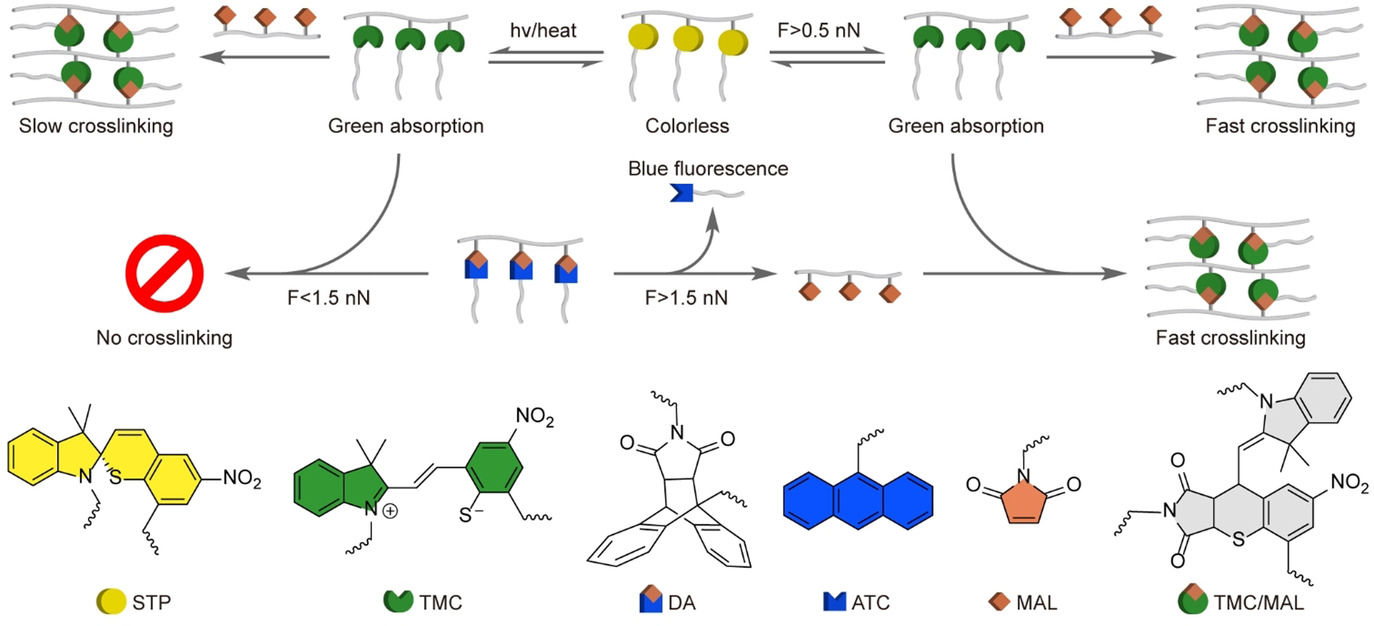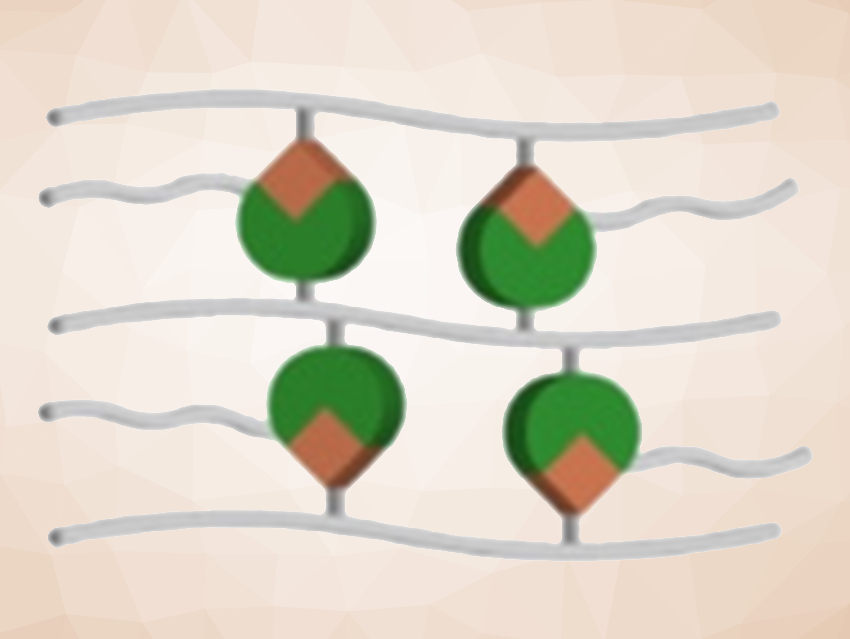Mechanical load degrades both living tissue and synthetic polymers. However, usually only living tissue senses such damage and triggers a repair. Polymer mechanochemistry aims to, e.g., design polymers with a similar repair capacity. Mechanochromic polymers change color when distorted, whereas load-strengthening polymers become tougher under mechanical load. A material that achieves both effects requires new approaches.
Wengui Weng, Xiamen University, China, Roman Boulatov, University of Liverpool, UK, and colleagues have developed a polymer that turns green when stressed and toughens up when stress is increased to a point where macroscopic failure becomes likely. The material combines two polymer chains, with each comb-line chain carrying either multiple spiropyrans or anthracene/maleimide adducts (pictured below). Three different reactions enable a stress response: one is responsible for the appearance of color, another strengthens the material by forming new covalent bonds between polymer chains, and the third determines at what mechanical load the material starts to strengthen.
Spirothiopyran (STP, pictured in yellow) is in equilibrium with a green merocyanine form (TMC, pictured in green). TMC can react spontaneously with C=C bonds in maleimide (MAL, pictured in orange) to form crosslinks. The MAL unit can be masked as a mechanochemically labile adduct with anthracene (ATC, pictured in blue), which allows the researchers to tune the force required for fast crosslinking and toughening.

- A Mechanochemical Reaction Cascade for Controlling Load-Strengthening of a Mechanochromic Polymer,
Yifei Pan, Huan Zhang, Piaoxue Xu, Yancong Tian, Chenxu Wang, Shishuai Xiang, Roman Boulatov, Wengui Weng,
Angew. Chem. Int. Ed. 2020.
https://doi.org/10.1002/anie.202010043



